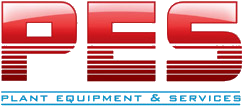Anti Abrasion Beaded Wearing Compound Epoxy Novalac Ceramic
Benefits
- Excellent dry-heat abrasion resistance
- Excellent impact resistance
- Excellent chemical and corrosion resistance
- Long working times
- Cures down to 40°F
Recommended Uses
- Pipe bends
- Chutes and hoppers
- Deflector screens
- Wear plates
- Centrifuges
- Mixing bowls
- Cyclones
- Nozzles
- Impellers
Generic Description
Epoxy Novalac
Standard Color
Gray
Packaging
20 kg unit
1 kg, 2 kg, 3 kg and 10 kg unites
Mix Ration 4:1 by Volume
Coverage
0.8 ft² per 1 kg @ 1/4″ thickness
Typical Application
- Optional – Appropriate Metal Primer
- Body Coat – PES 182 @ 1/4″ thickness
Performance Data
Compressive Strength – ASTM C-579 at 11,000 psi
Tensile Strength – ASTM C-307 at 3,000 psi
Flexural Strength – ASTM C-580 at 8,000 psi
Density – ASTM C-905 at 140 pcf (2.25 gm/cm3)
Tensile Shear – ASTM D1002 at 3,000 psi
Heat Resistance – 300°F
Storage Installation
Storage Environment – Dry area, indoor: 65-80°F
Application Temperature, ambient – 40-95°FApplication Temperature, substrate – 40-90°F
Shelf Life – 24 months
Pot Life, @ 77°F – 25 minutes
Tack Free Time, @ 77°F – 2 hours
Light Movement @ 77°F – 3 days
Full Loading @ 77°F – 2 days
Contact with Chemicals @ 77°F – 3 days
The material cures more slowly at cooler temperatures, and working time will be substantially reduced at higher temperatures. In hot weather, material should be cooled to 65°F to 80°F prior to mixing and applications to improve workability and avoid shortened pot life. The data shown above reflects typical results based on laboratory testing under controlled conditions. Reasonable variations from the data shown above may result.
Consideration & Limitations
- Do not thin with solvents unless advised to do so by PES.
- Prepare substrate according to “Surface Preparation” portion of this document.
- Always use protective clothing, gloves and goggles consistent with OSHA regulations during use. Avoid eye and skin contact. Do not ingest or inhale. Refer to Material Safety Data Sheet for detailed safety precautions.
- For industrial/commercial use use. Installation by trained personnel only.
- Do not apply when the temperature is below 40°F (5°C) or the relative humidity is above 90%.
- Do not apply when there is moisture on the metal surface or is likely to be deposited by subsequent condensation.
- Do not apply when the working environment is likely to be contaminated by oil/grease from adjacent equipment or smoke from kerosene heaters or tobacco smoking.
Surface Preparation
This product can be applied to substrate(s) that have been prepared according to the following Surface Preparation Guidelines:
Apply only to blast cleaned surfaces.
- Clean up loose contamination and degrease with a rag soaked in an effective cleaner, e.g. methylethyl ketone (MEK), which does not leave a residue
- Use only an angular abrasive to give a minimum depth of profile of 3 mils (75 microns) and the necessary standard of cleanliness.
- Blast-clean the metal surface to achieve near white finish SSPC SP 10.
- After blasting metal surfaces should be coated before any possible oxidation.
Salt Contaminated Surfaces
Metal surfaces that have been immersed in salt water, should be cleaned to the required standard.
Installation Steps
- Mixing: Mix the components of PES 182 thoroughly until a consistent color is obtained. When using large kits or when temperatures are above 77°F, consideration of mixing 4 parts base and 1 part activator should be taken.
- Application: Apply PES 182 onto prepared surface with a plastic applicator, spatula, or trowel blade. Press down firmly to remove entrapped air and insure maximum bonding to the surface. Work the material to correct depth and profile. Cured PES 182 cannot be satisfactorily ground or machined. If necessary, an additional layer should be applied when the first layer is still soft, within 2 hours at 77°F. If the over-coating time is exceeded, brush blast the cured material before any further application.
- Cleaning: Clean tools with a non-flammable and low-evaporating cleaner. Always wear gloves when using this product. Wash hands, arms and face with warm soapy water.
For more information about PES 182, don’t hesitate to contact us here at PES Solutions with the link below!



One Response to Pneumatic Pipe Repair Coating